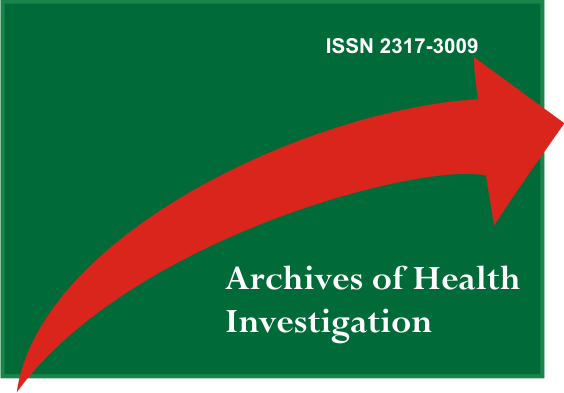Fratura de miniplaca em tratamento de luxação de ATM - Que conduta tomar?
Abstract
A luxação da articulação temporomandibular (ATM) ocorre quando o côndilo mandibular move-se para fora da cavidade articular e permanece travado anteriormente a eminência articular, sendo sua ocorrência repetitiva geralmente associada a hipermobilidade mandibular e a inclinação da eminência articular. Geralmente, é bilateral e suas características clínicas são: incapacidade de fechar a boca, depressão pré-auricular da pele, protusão do mento, salivação, dificuldade de falar, dor em graus variáveis e tensão da musculatura mastigatória. Em geral, existem duas modalidades de tratamento cirúrgico para a luxação recidivante da ATM, uma com o objetivo de restringir a abertura bucal (aumento da eminência articular com uso de anteparo) e outra com a finalidade de promover movimentos mandibulares livres (remoção da eminência articular), cada um com suas vantagens e desvantagens. Objetivo: Este trabalho discute as limitações do uso da técnica de miniplaca, apresentada por um caso onde ocorreu a fratura bilateral sendo posteriormente substituída pelo tratamento cirúrgico mais radical sendo realizada eminectomia.Palavras Chave: Luxações, Articulação Temporomandibular; Cirurgia.
Downloads
References
Cardoso, A. B.; Vasconcelos, B. C. E.; Oliveira, D. M. Bessa-Nogueira RV.. Tratamento cirúrgico da luxação recidivante da articulação temporomandibular pela eminectomia: relato de caso. Rev. Fac. Odont. Univ. Passo Fundo 2005; 10(1): 106-10.
Cardoso AB, Vasconcelos BCE, Oliveira DM, Bessa-Nogueira RV. Tratamento cirúrgico da luxação recidivante da ATM: uso de miniplaca. Rev.Odonto Cienc.2006; 21(54):392-7.
Hale RH. Treatment of recurrent dislocation of the mandible: review of literature and report of cases. Oral Surg, 1972; 30: 527-30.
Helman J, Laufer D, Minkov B, Gutman D. Eminectomy as surgical treatment for chronic mandibular dislocations. Int. J. Oral Surg. 1984; 13: 486-9.
Irby W. B. Surgical correction of chronic dislocation of the temporomandibular joint not responsive to conservative therapy. J. Oral Surg. 1957; 15(4): 307-12.
Kuttenberger JJ, Hardt N. Long-term results following miniplate eminoplasty for the treatment of recurrent dislocation and habitual luxation of the temporomandibular joint. Int J Oral Maxillofac Surg. 2003; 32:474-9
Myrhaug H A New method of operation for habitual dislocation of the mandible: review of former methods of treatment. Acta Odontol.Scand, 1951; 9: 247-61.
Oatis GW, Baker DA. The bilateral eminectomy as definitive treatment. A review of 44 patients. Int J oral Surg. 1984; 13: 294-8.
Puelacher WC, Waldhart E. Miniplate eminoplasty: a new surgical treatment for TMJ dislocation. J Cranio maxillofac Surg. 1993; 21:176-8.
Sato J, Segami N, Nishimura M, Suzuki T, Kaneyama K, Fujimura K. Clinical evaluation of arthroscopic eminoplasty for habitual dislocation of temporomandibular joint: comparative study with conventional open eminectomy. Oral Surg Oral Med Oral Pathol Oral Radial Endod. 2003; 95(4): 390-5.
Segami N, Kaneyama K, Tsurusako S, Suzuki T. Artrhoscopic eminoplasty for habitual dislocation of temporomandibular joint: preliminary study. J Craniomaxillofac Surg. 1999; 27(6): 390-7.
Shorey CW Campbell JH. Dislocation of the temporomandibular joint. Oral Surg Oral Med Oral Pathol Oral Radiol Endod, 2000; 89(6): 662-8.


